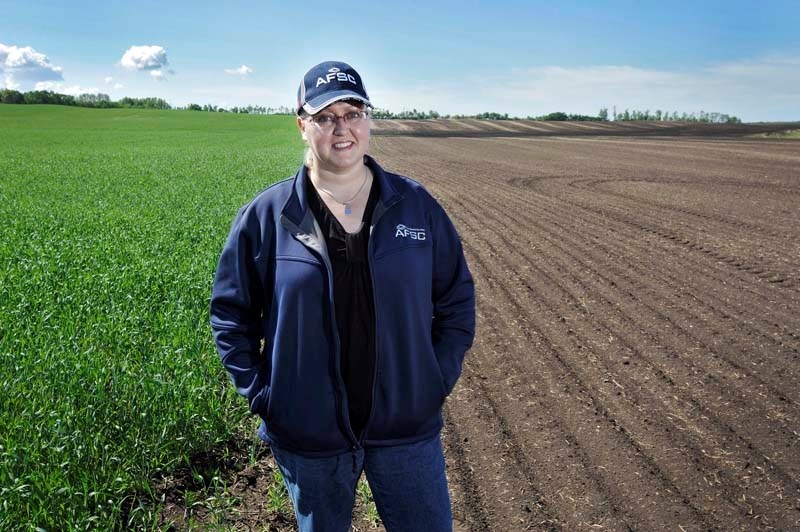With St. Albert-area crops finally seeded and starting to grow, farmers across the province are hoping for a quieter hail season this summer following record levels of hail damage over the past two years.
"Last year marked the third highest amount of hail damage to crops across Alberta in our 77 years as a provincial hail insurer," says Jackie Sanden, program coordinator with Agriculture Financial Services Corporation (AFSC). "Our branches reported 522 storm cells last year that pelted crops with hail from Fort Vermilion to the US border. The damage was widespread. Southern Alberta and 'Hail Alley' – which stretches westward along Highway 2 from Rocky Mountain House to Calgary, and eastward through Wheatland County – were particularly hard hit."
More than $257 million was paid out on more than 6,400 hail claims across Alberta last year, including Sturgeon County, through AFSC's Straight Hail Insurance program and the Hail Endorsement rider that most farmers add to their crop insurance. The highest claim year was in 2012 when $445.6 million was paid on more than 8,400 claims. "Alberta's top three years for record hail damage have all occurred in the last six years," says Sanden, noting 2008 marked the second highest year with $263 million in claims paid out.
Ingredients for hail
Environment Canada meteorologist Dan Kulak says wet spring weather and unusually high humidity over the last few years have likely contributed to the amount of hail in Alberta lately.
"Humidity and ground moisture fuel thunderstorms that produce hail," says Kulak, noting other ingredients include heat and a trigger to set everything in motion.
"That trigger can be simple daytime heating, causing warm air to rise and mix with cooler air above. Another trigger is the jet stream – that river of air that storms tend to follow – which flows over the mountains and right through the middle of Alberta every summer," he explains.
The mountains play a huge role in thunderstorm formation. They're the reason Alberta tends to get more hail than anywhere else in Canada, says Kulak.
"You can be sure Alberta will get hail this year. The question is how much," he says, noting every part of the province is susceptible to hail. "The wetter things get in June, the more storms we can end up with because the moisture just keeps recycling itself."
Straight hail coverage increased
As farmers brace themselves for the coming hail season, AFSC is increasing the coverage levels offered through its Straight Hail Insurance program.
"Producers have asked us to boost the coverage caps to help them protect their crops and cover their hail risk more effectively. As such, we're raising the maximum coverage farmers can insure on most crops to better reflect today's higher crop values and rising input costs," says Sanden.
Coverage has increased by a minimum of $75 per dryland acre and $175 on irrigated crops, with significant increases on potatoes, says Sanden.
"We've also created new coverage categories for higher-value crops like chickpeas and canola, which can now be insured for $325 per dryland acre, and $425 on irrigated crops. Full details are available at www.afsc.ca," she adds.
AFSC has provided hail insurance to Alberta farmers since 1938 when special legislation was passed creating the Alberta Hail Insurance Board, which later became AFSC.
"Farmers needed someone to offer hail insurance in every corner of the province, because back then it wasn't available everywhere; the risk was too high," says Sanden.
"That same need exists today because hail is still the biggest risk Alberta farmers face each year. We continue to offer hail insurance in every township, and we don't limit the number of acres we'll insure," she says, noting AFSC's mandate has broadened today to include the delivery of all-risk crop insurance, livestock price insurance, lending and income stabilization programs on behalf of government."




